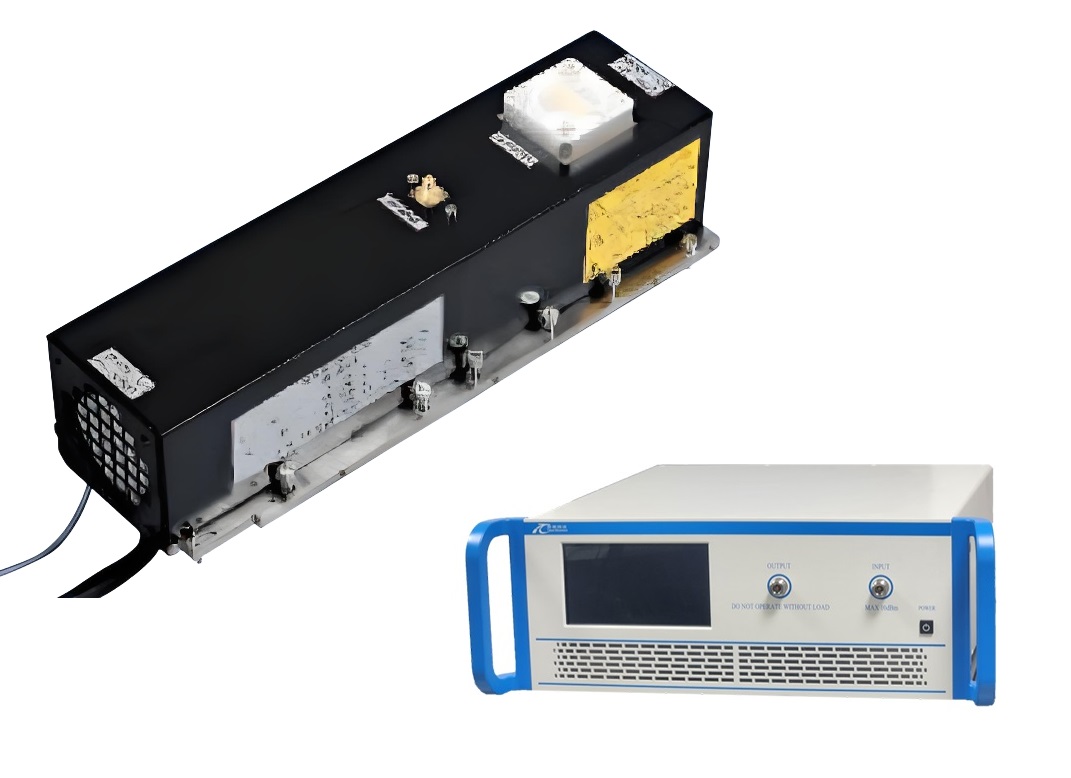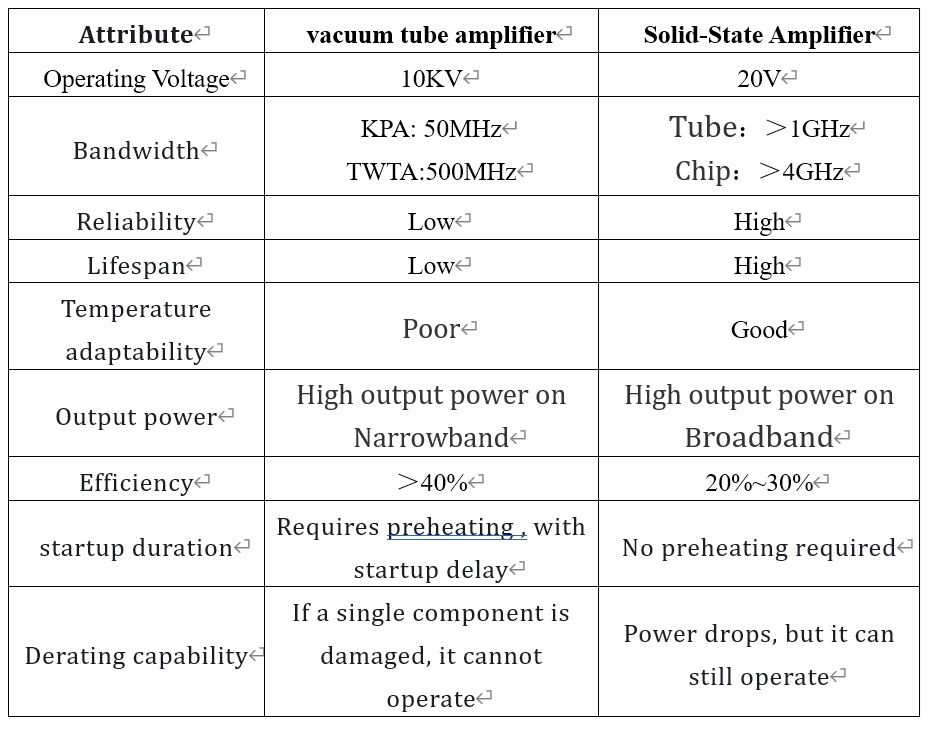All-Solid-State Amplifier OR TWT Amplifier
Microwave power amplifiers are mainly divided into two categories: vacuum power amplifiers and solid-state power amplifiers. Vacuum power amplifiers primarily consist of klystrons (KPA) and traveling wave tube amplifiers (TWTA). Vacuum power amplifiers generate the required microwave power using a single high-power vacuum electronic device. Solid-state amplifiers, on the other hand, use semiconductor power devices and achieve greater output power through power combining.
 The most significant feature of vacuum tube amplifiers is their high output power. However, with advancements in semiconductor power device manufacturing technology, the output power of solid-state amplifiers has approached that of vacuum tube amplifiers. Solid-state amplifiers, thanks to their low operating voltage, high reliability, ease of maintenance, and ability to operate continuously for long periods, have gradually replaced vacuum tube amplifiers in many fields and become the mainstream.
The most significant feature of vacuum tube amplifiers is their high output power. However, with advancements in semiconductor power device manufacturing technology, the output power of solid-state amplifiers has approached that of vacuum tube amplifiers. Solid-state amplifiers, thanks to their low operating voltage, high reliability, ease of maintenance, and ability to operate continuously for long periods, have gradually replaced vacuum tube amplifiers in many fields and become the mainstream.
China has already developed several enterprises that have developed single-tube output power exceeding 400W, and the process is mature and stable, providing possibilities for the manufacture of kilowatt-level solid-state amplifiers.
Contact Us
Name: Mr. JeffE-mail: tectok@proton.meE-mail: tectoktrad@gmail.comPhone: +852-46138583Phone: +853-62180505
© 2024 TecTok Trading Union All rights reserved




